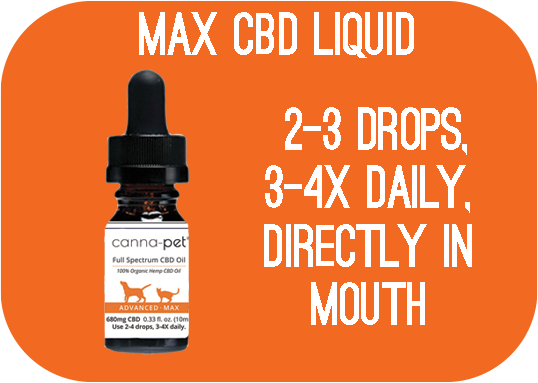Pocket Beagle Breed Guide

Breed Group:
Hound Dogs
Get 30% off
Join our Newsletter
Sign Up Today
Pocket Beagle Background Information & History
Known as Miniature Beagles or Olde English Pocket Beagles, this tiny dog breed packs all the same characteristics of the standard Beagle, but in a compact size. Dating back to Queen Elizabeth, Pocket Beagles were used for their scenthound abilities and served as excellent hunters alongside their human counterparts.
Although their early history is still relatively unclear, what historians do know is that these mini Beagles were a popular pet for noblemen and royalty, and were even a favorite companion for Queen Elizabeth and others of similar ranking. Today, the Pocket Beagle is a popular breed, however, but the American Kennel Club does not officially recognize them.
Pocket Beagle Temperament & Personality
Even though they are categorized as their own distinct breed, the smaller Pocket Beagle shares many of the same characteristics as their larger cousins. While they are known to be kind and gentle, they also have a stubborn side, which can make training efforts difficult. Aside from that, they are also very curious and playful, making them an excellent addition to any kind of household.
Pocket Beagle Training Tips
Beagles are notoriously famous for being a difficult breed to train. That’s because they tend to do whatever they want, and don’t have the drive to please their owners. With that being said, however, training a Pocket Beagle is not impossible.
Sure it might take a little extra practice and patience, but if you start the process early, your Beagle puppy should turn into a well-behaved dog in no time. If you are still struggling to train your pet or are an inexperienced owner, try enrolling him in a puppy obedience course for extra support.
Pocket Beagle Exercise Needs
Although they may be smaller dogs, the Pocket Beagle still requires plenty of exercise to stay both happy and healthy. These dogs are natural hunters and have a strong prey drive for anything that catches their eye. That’s why it’s important to keep this breed on a leash at all times or secure them inside a fenced-in yard.
Daily exercise is a must for Beagles not only to keep them healthy but to also keep them entertained as well. A bored Beagle will create their own fun by causing a ruckus or destroying your freshly planted flowers in the backyard. Avoid any behavioral issues from occurring with daily walks and lots of attention.
Pocket Beagle Lifespan
The Pocket Beagle has an average lifespan of 12 to 15 years.
Pocket Beagle Breed Popularity
Since the AKC unofficially recognizes the Pocket Beagle, it is very hard to tell their popularity within the United States. In general, the regular Beagle breed is among the most beloved dogs in all of America.
Pocket Beagle Feeding
On average, a Pocket Beagle requires 1 to 1 ½ cups of high-quality dog food daily, split into two equal meals. When creating your dog’s feeding regimen, make sure to take into consideration their age, weight, metabolism, and activity level. If you have further feeding questions about your specific Pocket Beagle, consult with your veterinarian. Along with their food, make sure to have a bowl of fresh water available at all times.
Pocket Beagle Grooming
Miniature Beagles are relatively clean dogs, to begin with, so they do not require regular bathing unless they get into a sticky situation. Weekly brushing is always recommended to keep their coat in optimal health.
Aside from their regular dog coat grooming, trim their nails every couple of weeks if they do not wear down naturally on their own. Lastly, be sure to brush their teeth at least once a week to avoid bacteria or tartar from building up. This is especially important because a majority of dogs will develop dental disease at some point in their lifetime.
Are Pocket Beagles Good With Kids?
Beagles are loving and gentle, making them a perfect companion for children. Since the Pocket Beagle is a small size and more fragile than the average, it is important that a child is old enough to understand how to treat and care for a pet. Just like with any animal, a parent should always be around to supervise any interactions between a child and a teacup Beagle.
Pocket Beagle Health Problems
Like any breed, the Pocket Beagle is prone to several health complications. Some of these health problems may include:
Eye disorders: Eye disorders are a common health problem affecting the Pocket Beagle. One of the most common eye condition that inflicts this breed are canine cataracts. Cataracts occur when the lens of the eye begins to turn foggy or opaque, which restricts light from entering the eye and causes blindness. In severe cases, cataracts can be removed through corrective surgery.
Hypothyroidism: Hypothyroidism is a common condition that can affect Pocket Beagles. This occurs when the body is unable to produce a sufficient amount of thyroid hormones, which causes a fluctuation in weight, lethargy, and other symptoms.
Hip Dysplasia: Hip Dysplasia in dogs occurs when the hip socket and thighbone do not fit together how they should, which causes lameness, pain, and can even lead to arthritis in severe cases.
Other Resources
National Breed Website: National Beagle Club of America
Rescue: Midwest Beagle Rescue
Health Issues Associated with this Breed:
- Anxiety
- Beagle Dwarfism
- Chinese Beagle Syndrome (CBS)
- Cleft Lip or Palate
- Cryptorchidism
- Cushing's Disease
- Dermatitis
- Epilepsy
- Epiphyseal Dysplasia
- Eye disorders
- Hermaphroditism
- Hip Dysplasia
- Hypothyroidism
- Inflammation
- Mast Cell Tumors
- Pain
- Patellar Luxation
- Seizures
- Separation Anxiety





